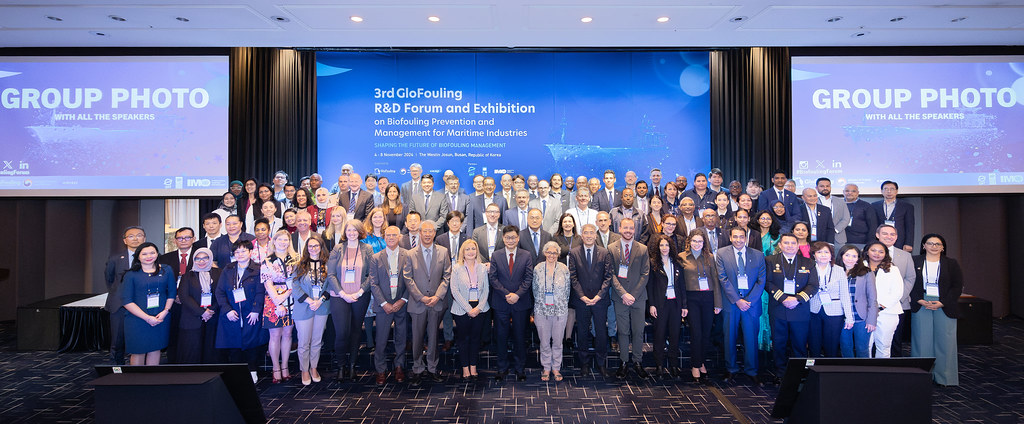
The 3rd Global GEF-UNDP-IMO GloFouling Partnerships R&D Forum and Exhibition concluded on a high note in Busan, Republic of Korea, drawing more than 250 participants from across various sectors. The event was co-hosted by the Ministry of Oceans and Fisheries (MoF) and the Korea Research Institute of Ships & Ocean Engineering (KRISO).
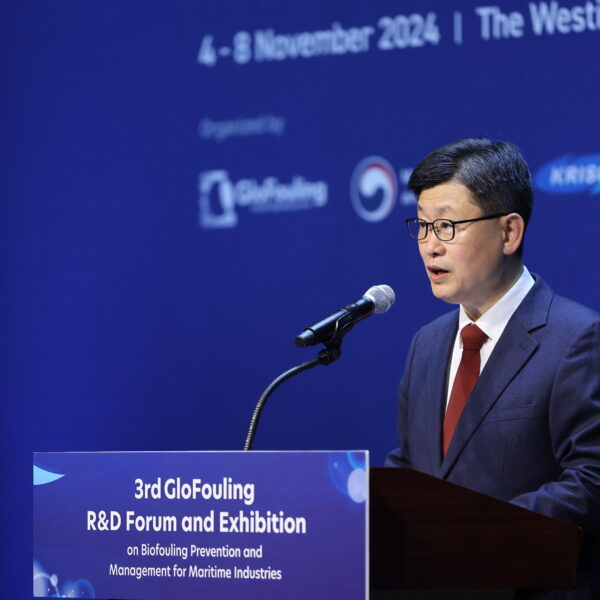
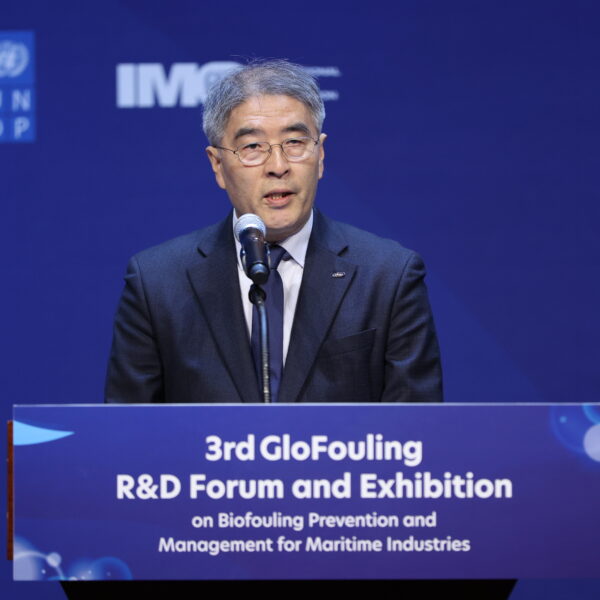
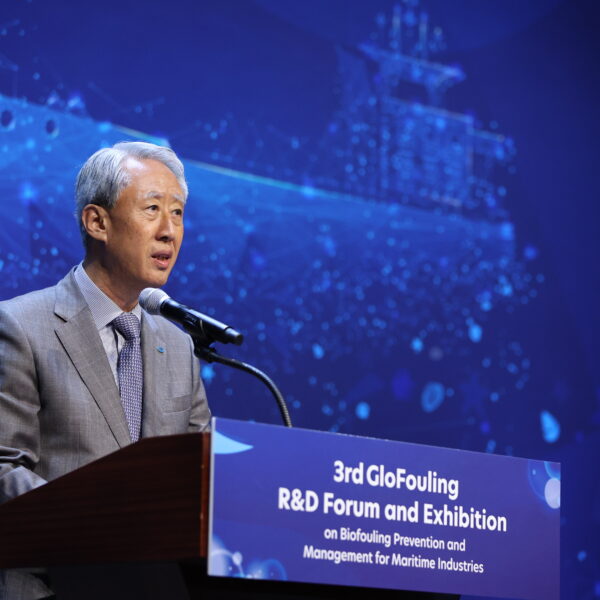
Government representatives, regional coordinating organizations, technology developers, industry associations, academia, classification societies, and women’s associations joined delegates from 26 beneficiary countries of the GloFouling Partnerships and TEST Biofouling projects to exchange knowledge and explore the latest developments in biofouling management.
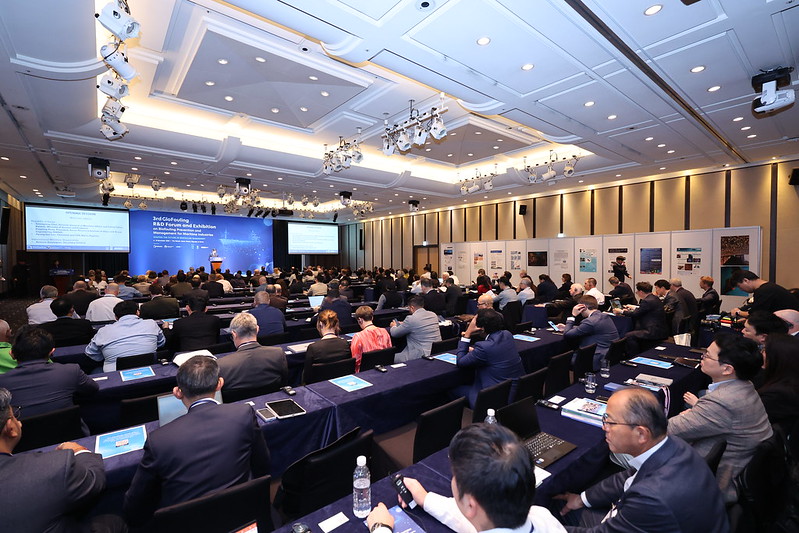
Over five days, the forum offered a dynamic programme of expert presentations and interactive discussions focused on managing Invasive Aquatic Species (IAS) and reducing the impacts of biofouling. A key highlight was the premiere of Silent Invaders: The Unseen Impact of Invasive Aquatic Species, a documentary produced by the Global Industry Alliance (GIA) for Marine Biosafety, which shed light on the widespread environmental, economic, and human consequences of IAS. These themes were further explored through sessions on cutting-edge technologies—including anti-fouling coatings, in-water cleaning systems, and UV-LED innovations—as well as advancements in early detection and rapid response frameworks. Participants also examined the implications of biofouling on fuel consumption and greenhouse gas (GHG) emissions, supported by recent experimental data.
The Forum featured a special session focused on the Republic of Korea’s legislative and policy advancements, risk assessment research, and technologies for biofouling prevention and treatment. This informative session enabled detailed exchanges with local experts, offering insights into the country’s unique approaches and innovations. Meanwhile, a parallel exhibition allowed attendees to explore a range of anti-fouling systems, including in-water cleaning technologies and protective coatings. A poster display further enriched the exhibition by showcasing research on AI-powered decision support tools, biofouling’s economic impacts, the role of colour and water temperature in fouling development, and other environmental considerations, providing participants with a broader understanding of the multidisciplinary efforts advancing marine biosecurity.
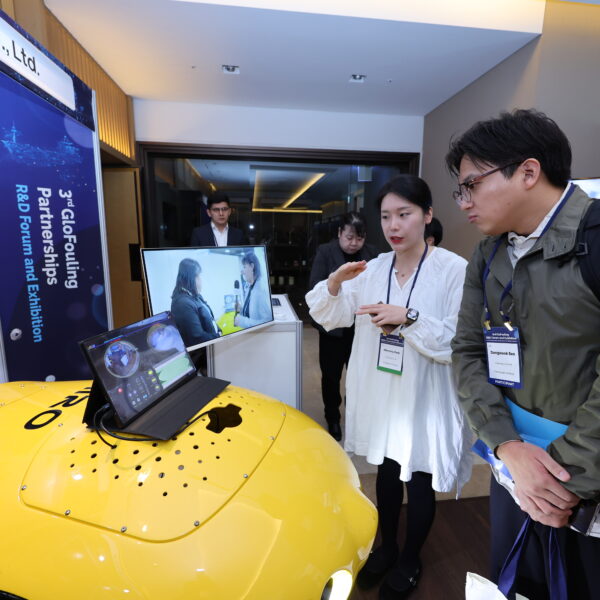
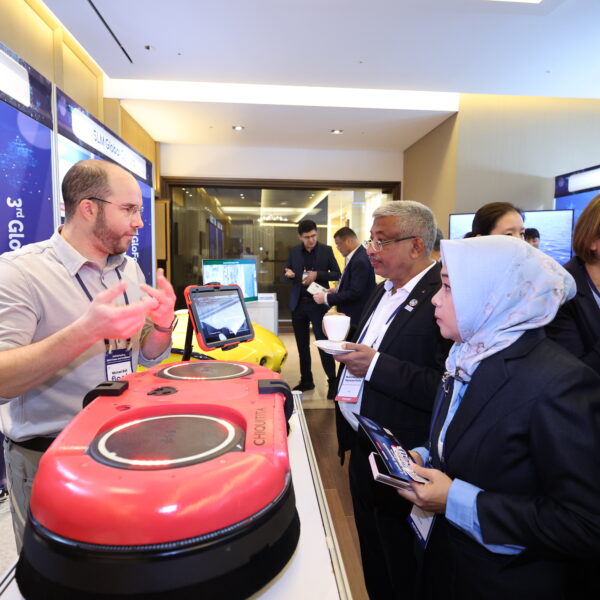
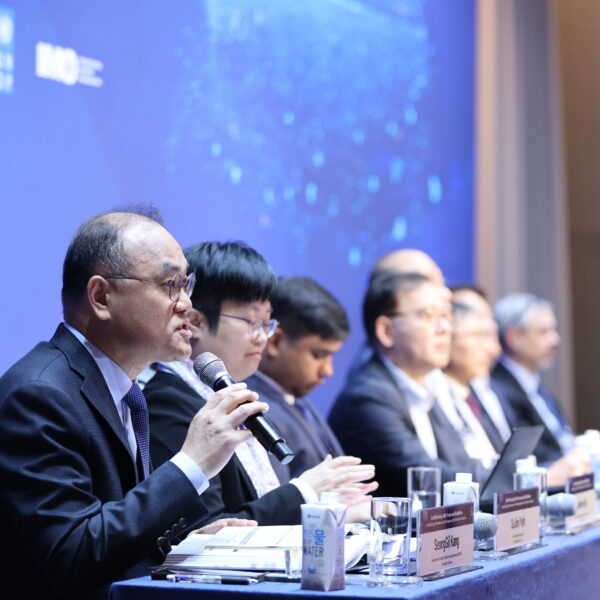
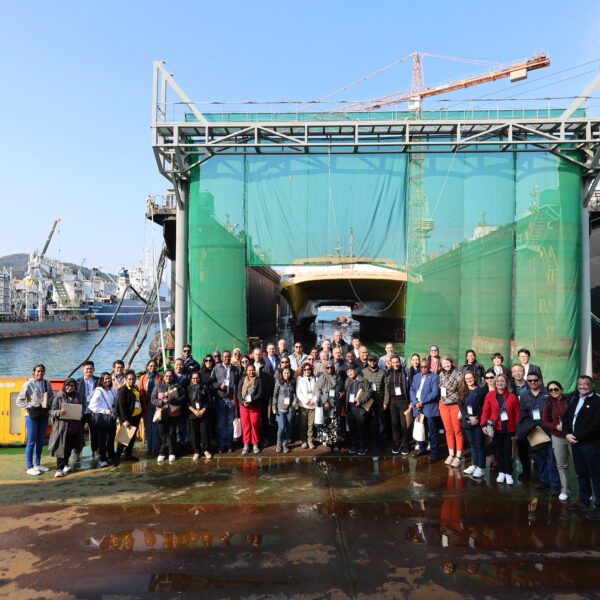
Participants were offered a rich programme of technical site visits, beginning with a live dry-dock cleaning demonstration at the Orient Shipyard. This visit provided delegates, including representatives from IMO Member States, with a first-hand view of dry-docking procedures in practice. Experts guided attendees through each phase of the operation, explaining the water sourcing for high-pressure jets, the sequential stages of hull cleaning, waste collection and containment measures, and the application of marine coatings.
The site visit continued at the Ocean Engineering Basin of KRISO, where participants explored advanced testing facilities simulating realistic maritime conditions—such as waves, wind, and currents. These simulations support assessments of vessel manoeuvrability and structural stability, offering vital data for evaluating ship and offshore platform performance.
In addition, a dynamic regional technology demonstration took place under the TEST Biofouling project. Hosted by members of the Global Industry Alliance (GIA) for Marine Biosafety—TAS Global Co. Ltd and SLM-Global—the session enabled attendees to interact directly with state-of-the-art technologies. Participants engaged in hands-on activities, including operating equipment, trialling different brush types for in-water cleaning, using diving gear, and discussing practical efficiencies with the developers. This immersive experience showcased operational techniques in real-world conditions, enhancing understanding of how these solutions contribute to effective biofouling management.
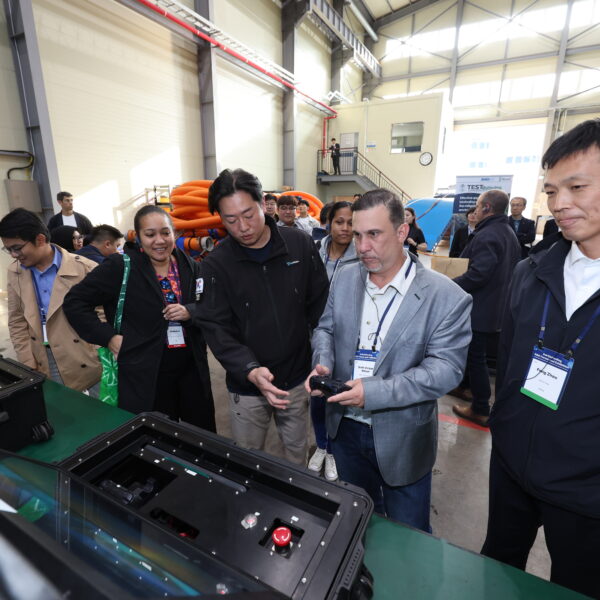
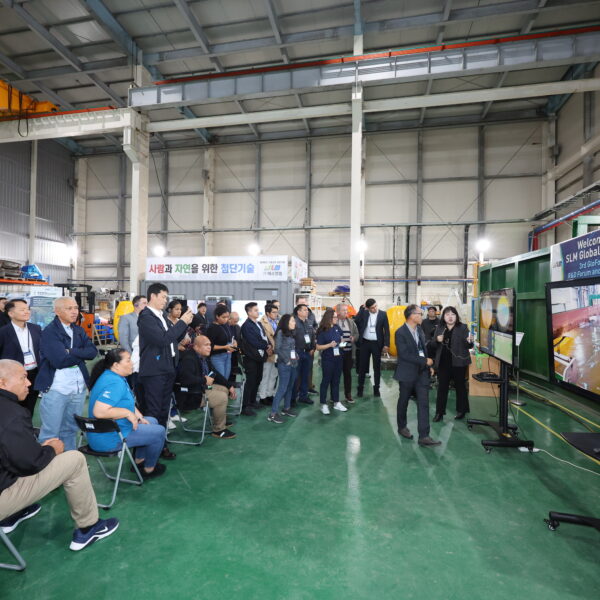
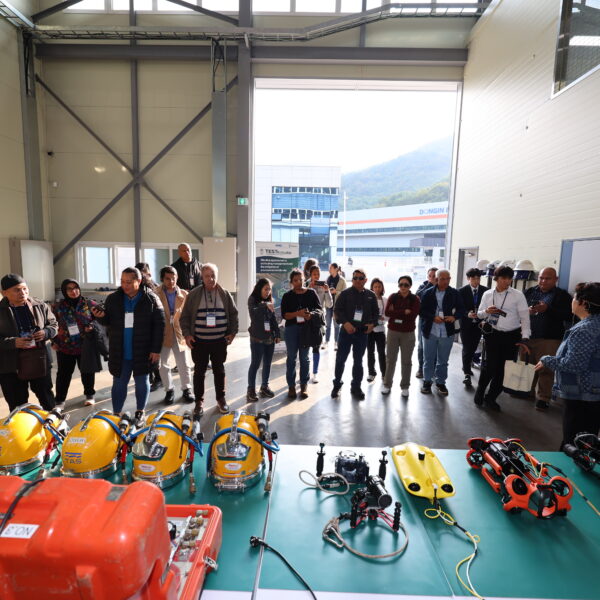
Furthermore, presenters emphasized the importance of customized biofouling management strategies specifically designed for Marine Protected Areas (MPAs) and Particularly Sensitive Sea Areas (PSSAs), highlighting how these approaches can help safeguard some of the world’s most ecologically vulnerable marine environments. As part of this session, the GloFouling Partnerships project launched its new publication, Biofouling Management in MPAs and PSSAs: Compendium of recommendations for the prevention and early detection of and rapid response to invasive aquatic species.
Experts underlined the critical need for localized practices in managing biofouling to reduce the risk of non-indigenous species threatening native biodiversity. One of the major topics of discussion was the ongoing process to designate the Thermal Dome as a PSSA. This initiative, if successful, could serve as a benchmark for enhancing conservation efforts in similar marine habitats across the globe.
In addition, a framework was introduced, designed to evaluate the presence and potential impact of invasive species in MPAs, with a particular focus on the Eastern Tropical Pacific region. This tool aims to strengthen early-warning systems and enable more proactive management strategies, ultimately supporting long-term efforts to preserve the ecological balance and integrity of marine ecosystems in sensitive zones.

To address comprehensive biofouling management, the programme featured a focused panel session exploring key international policy developments and regulatory frameworks. Discussions highlighted national approaches such as California’s regulations, New Zealand’s vessel biofouling requirements, and Norway’s proactive initiatives, with several participants advocating for a unified and mandatory global framework. The session also discussed the 2023 IMO Biofouling Guidelines, recent updates to ISO standards for in-water cleaning, and the concept of “clean hull notation”—a voluntary classification reflecting a vessel’s biofouling performance. Panellists underscored the growing momentum toward a global biofouling management convention, noting the importance of harmonised standards to effectively address invasive aquatic species while ensuring environmental sustainability.
The forum featured the topic of advancing gender equality and supporting women’s roles in the biofouling field, which is vital for the biofouling sector and the maritime community. Presentations on IMO gender initiatives focused on inclusivity and focused on topics like the Gender Action Plan and findings from Women in Biofouling reports. there was also an interactive panel which allowed speakers to share personal experience of gender imbalance, diversity in leadership and the importance of male allies in achieving gender equality. The session ended with with encouraging attendees to commit to nurturing inclusivity across the industry by recommending diverse networking options, targeted programs and ways to uplift underrepresented voices.
On the last day the participants visited the Korean Institute of Ocean Science and Technology (KIOST) and Korea Marine Equipment Research Institute (KOMERI) facilities where they had an opportunity to witness Biofouling Management testing facilities and advanced Ballast Water Management. KIOST provided exclusive access for the attendees to see their depository library of over 10000 marine species and marine geographical samples. Scientists worldwide can use this bank to progress their research. KIOST also invited onboard their research boat, which sails nearby seas as far as the Atlantic to collect data through water samples, measuring the seabed and more. The boat sails for 200 days a year and collects data for research.
As part of the tour Samsung Heavy Industries also allowed attendees to see their ship building facilities, which has eight docks and the capacity to build 70 floating production storage and offloading ships (FPSOs), Liquefied natural gas (LNG) storage ships, drill ships, I class shuttle tankers and specialized ships in each calendar year.
The R&D Forum proved very popular and provided many networking opportunities for all its participants with many requesting for another forum in near future.
